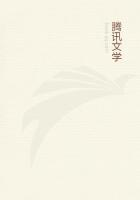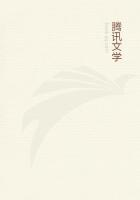The spiral-shaped testaceans are all similarly constructed, but differ from one another, as has been said, in the way of excess or defect (for the larger species have larger and more conspicuous organs, and the smaller have smaller and less conspicuous), and, furthermore, in relative hardness or softness, and in other such accidents or properties. All the stromboids, for instance, have the flesh that extrudes from the mouth of the shell, hard and stiff;some more, and some less. From the middle of this protrudes the head and two horns, and these horns are large in the large species, but exceedingly minute in the smaller ones. The head protrudes from them all in the same way; and, if the animal be alarmed, the head draws in again. Some of these creatures have a mouth and teeth, as the snail; teeth sharp, and small, and delicate. They have also a proboscis just like that of the fly; and the proboscis is tongue-shaped. The ceryx and the purple murex have this organ firm and solid; and just as the myops, or horse-fly, and the oestrus, or gadfly, can pierce the skin of a quadruped, so is that proboscis proportionately stronger in these testaceans; for they bore right through the shells of other shell-fish on which they prey. The stomach follows close upon the mouth, and, by the way, this organ in the snail resembles a bird's crop. Underneath come two white firm formations, mastoid or papillary in form; and similar formations are found in the cuttle-fish also, only that they are of a firmer consistency in the cuttle-fish. After the stomach comes an oesophagus, ****** and long, extending to the poppy or quasi-liver, which is in the innermost recess of the shell. All these statements may be verified in the case of the purple murex and the ceryx by observation within the whorl of the shell. What comes next to the oesophagus is the gut; in fact, the gut is continuous with the oesophagus, and runs its whole length uncomplicated to the outlet of the residuum. The gut has its point of origin in the region of the coil of the mecon, or so-called 'poppy', and is wider hereabouts (for remember, the mecon is for the most part a sort of excretion in all testaceans); it then takes a bend and runs up again towards the fleshy part, and terminates by the side of the head, where the animal discharges its residuum; and this holds good in the case of all stromboid testaceans, whether terrestrial or marine. From the stomach there is drawn in a parallel direction with the oesophagus, in the larger snails, a long white duct enveloped in a membrane, resembling in colour the mastoid formations higher up; and in it are nicks or interruptions, as in the egg-mass of the crawfish, only, by the way, the duct of which we are treating is white and the egg-mass of the crawfish is red. This formation has no outlet nor duct, but is enveloped in a thin membrane with a narrow cavity in its interior. And from the gut downward extend black and rough formations, in close connexion, something like the formations in the tortoise, only not so black. Marine snails, also, have these formations, and the white ones, only that the formations are smaller in the smaller species.
The non-spiral univalves and bivalves are in some respect similar in construction, and in some respects dissimilar, to the spiral testaceans. They all have a head and horns, and a mouth, and the organ resembling a tongue; but these organs, in the smaller species, are indiscernible owing to the minuteness of these animals, and some are indiscernible even in the larger species when dead, or when at rest and motionless. They all have the mecon, or poppy, but not all in the same place, nor of equal size, nor similarly open to observation; thus, the limpets have this organ deep down in the bottom of the shell, and the bivalves at the hinge connecting the two valves.
They also have in all cases the hairy growths or beards, in a circular form, as in the scallops. And, with regard to the so-called 'egg', in those that have it, when they have it, it is situated in one of the semi-circles of the periphery, as is the case with the white formation in the snail; for this white formation in the snail corresponds to the so-called egg of which we are speaking. But all these organs, as has been stated, are distinctly traceable in the larger species, while in the small ones they are in some cases almost, and in others altogether, indiscernible. Hence they are most plainly visible in the large scallops; and these are the bivalves that have one valve flat-shaped, like the lid of a pot. The outlet of the excretion is in all these animals (save for the exception to be afterwards related)on one side; for there is a passage whereby the excretion passes out. (And, remember, the mecon or poppy, as has been stated, is an excretion in all these animals-an excretion enveloped in a membrane.) The so-called egg has no outlet in any of these creatures, but is merely an excrescence in the fleshy mass; and it is not situated in the same region with the gut, but the 'egg' is situated on the right-hand side and the gut on the left. Such are the relations of the anal vent in most of these animals; but in the case of the wild limpet (called by some the 'sea-ear'), the residuum issues beneath the shell, for the shell is perforated to give an outlet. In this particular limpet the stomach is seen coming after the mouth, and the egg-shaped formations are discernible. But for the relative positions of these parts you are referred to my Treatise on Anatomy.
The so-called carcinium or hermit crab is in a way intermediate between the crustaceans and the testaceans. In its nature it resembles the crawfish kind, and it is born ****** of itself, but by its habit of introducing itself into a shell and living there it resembles the testaceans, and so appears to partake of the characters of both kinds.















